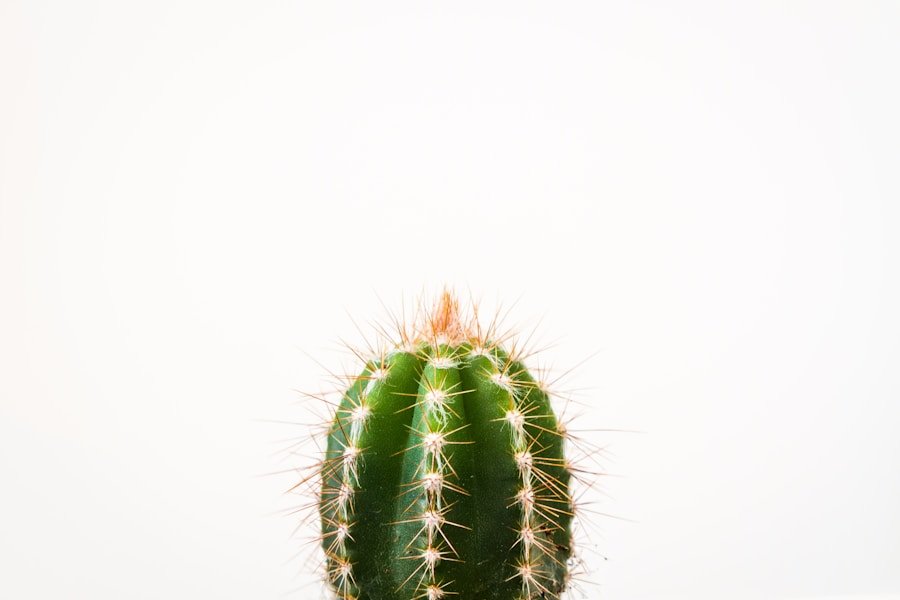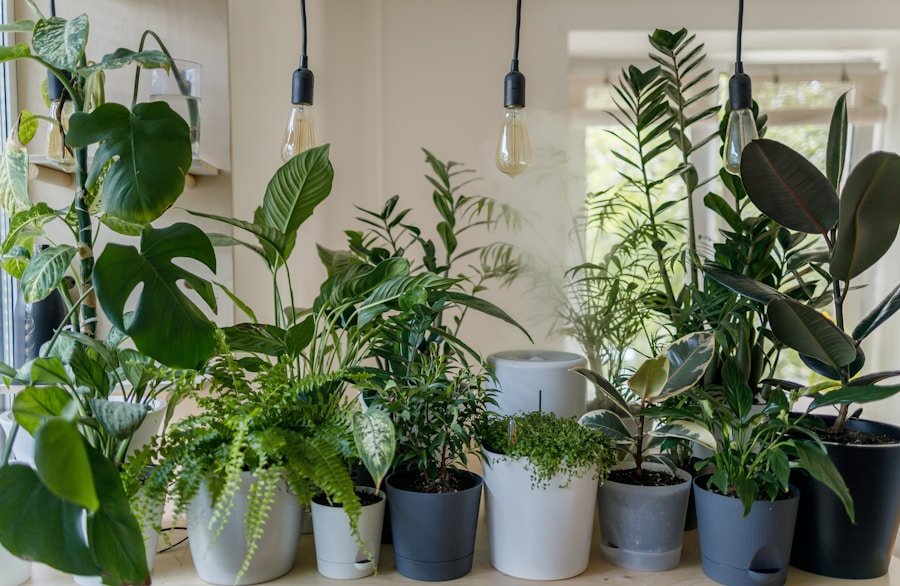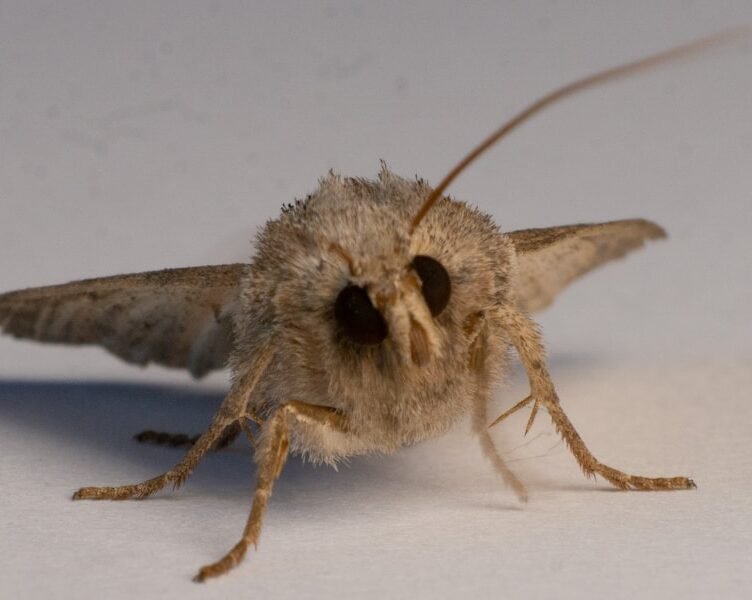Cuddly cacti and prickly pears may both belong to the cactus family, but they have distinct physical characteristics that set them apart. Cuddly cacti, also known as the Mammillaria genus, are known for their small, round shape and soft, fuzzy spines. These spines give them a cuddly appearance, hence their name.
On the other hand, prickly pears, also known as Opuntia, are characterized by their flat, paddle-shaped stems and large, sharp spines. The prickly pear’s spines can be quite formidable, making it important to handle them with care. In terms of size, cuddly cacti are generally smaller and more compact, while prickly pears can grow quite large and sprawling.
When it comes to flowers, cuddly cacti typically produce small, colorful blooms that adorn the top of the plant. These flowers can range in color from white and pink to yellow and red, adding a pop of color to the otherwise green or grayish-green cactus. Prickly pears, on the other hand, produce larger, showier flowers that can be yellow, orange, or red in color.
These flowers are often followed by edible fruits, which are a defining feature of the prickly pear cactus. Overall, while both types of cacti share some similarities in their physical characteristics, their differences are what make them unique and interesting additions to any garden or collection.
Key Takeaways
- Cuddly cacti are typically small and round, while prickly pears are larger and have flat, paddle-like stems.
- Cuddly cacti are often found in deserts and dry regions, while prickly pears are native to the Americas and can be found in a variety of habitats.
- Both cuddly cacti and prickly pears have medicinal and culinary uses, but prickly pears are more commonly used for their edible fruits.
- Cuddly cacti are easy to care for and require minimal watering, while prickly pears need well-drained soil and plenty of sunlight.
- Contrary to popular belief, not all cacti are edible, and not all prickly pears are prickly – some varieties have been bred to be spineless.
Habitat and Distribution
Cuddly cacti and prickly pears can be found in a variety of habitats and have different distributions around the world. Cuddly cacti are native to the Americas, with a particular concentration in Mexico. They are often found in arid or semi-arid regions, where they have adapted to survive in harsh conditions with little water.
Some species of cuddly cacti can also be found in parts of the southwestern United States. In their natural habitat, cuddly cacti often grow in rocky or sandy soils and are able to thrive in hot, dry climates. Prickly pears, on the other hand, have a much wider distribution and can be found in various parts of the world.
They are native to the Americas, but have been introduced to other regions such as Europe, Africa, and Australia. In their native habitat, prickly pears can be found in a range of environments, from deserts to grasslands to coastal areas. They are able to tolerate a wide range of temperatures and soil types, making them adaptable and resilient plants.
Overall, while both types of cacti have evolved to survive in challenging environments, their specific habitats and distributions vary based on their individual characteristics and adaptations.
Uses and Benefits
Both cuddly cacti and prickly pears have been used for various purposes by humans for centuries. Cuddly cacti have been valued for their ornamental qualities, as their unique appearance and colorful flowers make them popular additions to gardens and collections. In addition to their aesthetic appeal, cuddly cacti have also been used for medicinal purposes by indigenous cultures.
Some species of cuddly cacti are believed to have anti-inflammatory and pain-relieving properties, and are used to treat conditions such as arthritis and digestive issues. Prickly pears have a long history of use as a food source, with the fruits being a staple in the diets of indigenous peoples in the Americas. The fruits of the prickly pear cactus are rich in vitamins and antioxidants, and can be eaten raw or used to make jams, jellies, and beverages.
In addition to their culinary uses, prickly pears have also been used for medicinal purposes. The pads of the prickly pear cactus are believed to have anti-inflammatory and antioxidant properties, and are used to treat wounds and skin conditions. Overall, both cuddly cacti and prickly pears have a range of uses and benefits that make them valuable plants with a long history of use by humans.
Cultivation and Care
| Aspect | Cuddly Cactus | Prickly Pear |
|---|---|---|
| Appearance | Round and soft | Flat and paddle-shaped |
| Spines | Minimal or no spines | Covered in spines |
| Flowers | Large and showy | Small and delicate |
| Fruit | Rarely produces fruit | Produces edible fruit |
| Origin | Mexico and Central America | North and South America |
Cuddly cacti and prickly pears have different cultivation requirements and care needs due to their unique characteristics. Cuddly cacti are relatively easy to grow and care for, making them popular choices for beginners and experienced gardeners alike. They thrive in well-draining soil and require plenty of sunlight to grow and bloom.
Cuddly cacti are also drought-tolerant plants that require minimal watering, making them ideal for low-maintenance gardens or xeriscaping projects. In terms of temperature, cuddly cacti prefer warm conditions and can be grown outdoors in USDA hardiness zones 9-11. Prickly pears have similar requirements when it comes to soil and sunlight, but they have some additional considerations due to their larger size and potential for fruit production.
Like cuddly cacti, prickly pears require well-draining soil and plenty of sunlight to thrive. They are also drought-tolerant plants that can withstand hot, dry conditions. However, prickly pears may require more space to grow due to their sprawling nature, so they are best suited for larger gardens or outdoor spaces.
In terms of temperature, prickly pears can tolerate a wider range of conditions and can be grown outdoors in USDA hardiness zones 8-11. Overall, while both types of cacti have similar requirements for soil and sunlight, their differences in size and fruit production make them unique when it comes to cultivation and care.
One of the most significant differences between cuddly cacti and prickly pears is their edibility. While cuddly cacti are primarily grown for ornamental purposes and do not produce edible fruits or pads, prickly pears are valued for their culinary uses. The fruits of the prickly pear cactus are sweet and flavorful, with a texture similar to watermelon or kiwi.
They can be eaten raw or used to make a variety of dishes such as salads, salsas, and desserts. In addition to their fruits, the pads of the prickly pear cactus can also be eaten after removing the spines and outer skin. The pads are often used in Mexican cuisine and are known for their slightly tart flavor and crunchy texture.
In contrast, cuddly cacti do not produce edible fruits or pads and are not typically consumed by humans. While some species of cuddly cacti have been used for medicinal purposes by indigenous cultures, they are not considered to be edible plants. Instead, cuddly cacti are valued for their unique appearance and colorful flowers, making them popular choices for gardens and collections.
Overall, while both types of cacti have their own unique qualities and uses, their edibility is one of the most significant differences between them.
Popular Varieties
Both cuddly cacti and prickly pears have a wide range of popular varieties that are prized for their unique characteristics and ornamental qualities. Some popular varieties of cuddly cacti include Mammillaria hahniana, also known as old lady cactus, which is known for its dense covering of white spines that give it a fuzzy appearance. Another popular variety is Mammillaria elongata, also known as ladyfinger cactus, which is characterized by its elongated stems and small pink or white flowers.
These varieties are just a few examples of the diverse range of cuddly cacti available to gardeners and collectors. Prickly pears also have a variety of popular varieties that are valued for their fruit production and ornamental qualities. One popular variety is Opuntia ficus-indica, also known as Indian fig or barbary fig, which is prized for its large, sweet fruits that can be eaten raw or used in cooking.
Another popular variety is Opuntia engelmannii, also known as cow’s tongue cactus, which is valued for its showy yellow flowers and ability to thrive in a variety of environments. These varieties are just a few examples of the diverse range of prickly pears available to gardeners and enthusiasts.
Myth-busting: Common Misconceptions
There are several common misconceptions about cuddly cacti and prickly pears that are important to address in order to better understand these unique plants. One common misconception is that all cacti are prickly or spiny, when in fact there are many species of cuddly cacti that have soft, fuzzy spines or no spines at all. This misconception can lead to misunderstandings about the diversity of cacti and their potential uses in gardens or landscapes.
Another common misconception is that all prickly pears produce edible fruits that are safe for consumption. While many species of prickly pears do produce edible fruits that are enjoyed by humans and wildlife alike, there are some species that produce fruits that are toxic or unpalatable. It is important for gardeners and foragers to properly identify the species of prickly pear they are dealing with in order to ensure safe consumption.
Overall, by addressing these common misconceptions about cuddly cacti and prickly pears, we can gain a better understanding of these unique plants and appreciate their diversity and value in our gardens and landscapes. In conclusion, while cuddly cacti and prickly pears may share some similarities as members of the cactus family, they have distinct physical characteristics, habitats, uses, cultivation requirements, edibility, popular varieties, and common misconceptions that set them apart from each other. By understanding these differences, we can better appreciate the unique qualities of each type of cactus and make informed decisions about how to incorporate them into our gardens or collections.
Whether you prefer the soft spines and colorful flowers of cuddly cacti or the edible fruits and showy flowers of prickly pears, there is no denying the beauty and value of these fascinating plants.
FAQs
What is the difference between a cuddly cactus and a prickly pear?
The main difference between a cuddly cactus and a prickly pear is their appearance. Cuddly cacti have soft, fuzzy spines, while prickly pears have sharp, barbed spines.
Are cuddly cacti and prickly pears from the same family?
Yes, both cuddly cacti and prickly pears belong to the Cactaceae family, which is the family of cacti.
Can cuddly cacti and prickly pears be found in the same regions?
Yes, both cuddly cacti and prickly pears can be found in similar regions, such as the deserts of North and South America.
Do cuddly cacti and prickly pears have similar care requirements?
Cuddly cacti and prickly pears have similar care requirements in terms of sunlight and well-draining soil, but their watering needs may differ slightly.
Are cuddly cacti and prickly pears both suitable for indoor cultivation?
Yes, both cuddly cacti and prickly pears can be grown indoors as long as they receive adequate sunlight and proper care.








1 Comment